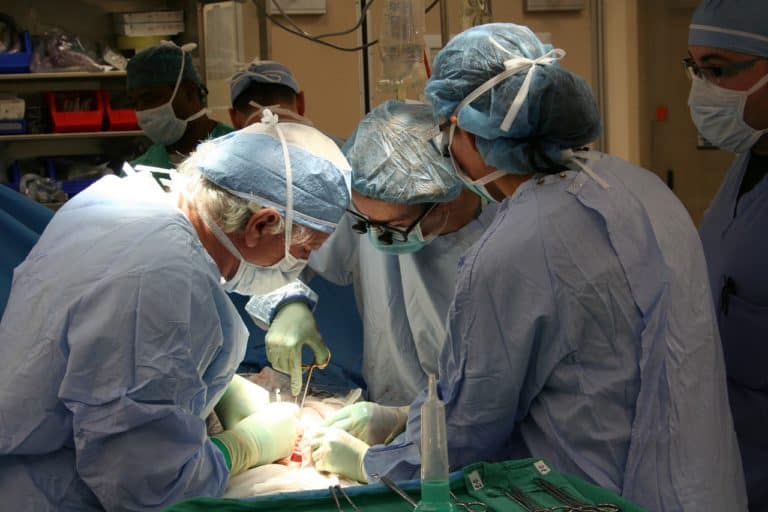Today’s world of prostate cancer (PCa) is a far cry from what it was in your dad’s day. New knowledge about the disease includes a better understanding of prostate anatomy, PCa genomics, the behavior of cancer cells, the role of lifestyle, etc. However, some old beliefs still linger. It’s time to put them to rest.
Myth number one – Prostate cancer is an old man’s disease.
It is true that the incidence of PCa increases with age. Aging predisposes cells to become more susceptible to mutations, and the accumulation of mutations increases the risk of cancer. Autopsies show that at least 80% of men in their 70s who died of other causes had microscopic PCa. However, it is estimated that 1 out of 38 younger men (ages 40-59) will be diagnosed with PCa, and 1 in 15 by age 69.
Myth number two – Prostate cancer is slow growing.
We now know that there are over 25 different prostate cancer cell lines. They don’t all behave alike, but they have one thing in common: cancer doesn’t stand still. Younger men tend to harbor more aggressive disease than elderly men. Aggressive prostate cancer can grow faster (become larger by reproducing more cells) and progress sooner (become more dangerous). The fact is, no one should take any cancer for granted. Conventional risk factors (PSA, Gleason score, stage) can’t adequately predict tumor activity. It is important to detect PCa early and gain information about its cell line. Don’t assume it’s slow growing, especially if you have a family history of either breast or prostate cancer.
Myth number three– Prostate cancer is a multifocal disease.
It used to be thought that if prostate cancer was found in one part of the gland, it was probably scattered elsewhere. The source of this myth goes back to the idea of aging cells being more prone to genetic breakdown and the assumption that such aging is distributed equally in the prostate gland. However, when prostatectomy specimens have been thoroughly examined, at least 23% reveal unifocal disease. There is also the concept of biologically unifocal disease, defined as having an index lesion (largest tumor) containing significant PCa, but several small foci of insignificant prostate cancer.
Myth number four – Radical prostatectomy is the gold standard of PCa treatment.
To be honest, this is not a myth. Radical prostatectomy (RP) is, in fact, the gold standard because the body of published data allows it to be used as a basis for comparing treatments. For example, it is useful for a patient considering a treatment to compare the incidence of radiation side effects against the incidence of RP side effects.
However, patients do not understand what is meant by the “gold standard,” so what they hear is that radical prostatectomy (RP) is the best way to cure PCa. However, that IS a myth. RP has about a 75% long term failure rate when all studies are averaged. This means that for roughly 25% of RP patients, the surgery was not curative.
Myth number five – There’s no way to protect yourself from PCa.
It is possible to minimize the risk of developing PCa. Of course, some men are at greater risk than others due to family history, ethnicity, exposure to toxins, etc. However, there is consistent research showing that lifestyle changes do affect genes that regulate tumor growth. A combination of the following measures can greatly reduce the chance of developing PCa, especially aggressive disease:
- Diet – Cut way back on red meat; eat chicken, fish, fruits, veggies and nuts, preferably organic. Reduce sugar and alcohol, quit smoking, reduce caloric intake. What’s good for your cardiovascular health benefits your prostate.
- Exercise – Vigorous, sustained exercise 3 times per week has several effects that promote cancer-free health. For instance, your blood vessels will maintain a round shape and healthier lining, making it difficult for circulating tumor cells to stick to the inner walls and work their way through to other organs.
- Supplements – Prevent inflammation, a breeding ground for cancerous mutations. Nature abounds with anti-inflammatory components like curcumin and alpha-lipoic acid.
- Common aspirin – There is evidence that aspirin may not stop PCa from beginning, but it may protect against getting an aggressive form of the disease.
- Stress management and meditation – While the exact mechanisms have not been fully identified, techniques like yoga, meditation and conscious breathing have powerful physiological effects, including lowering blood pressure, reducing inflammation, and boosting the immune system.
So, erase the old myths from your mind, and take stock of what you can do to improve not just your prostate health, but your overall well-being and the probability of a long, healthy and vigorous life.
Copyright by Dan Sperling, MD. Reprint permission courtesy of Sperling Prostate Center (New York, Florida), the leading U.S. center for multiparametric detection, diagnosis and image-guided focal treatment of prostate cancer.
Read more in our Prostate Cancer Health Center.







